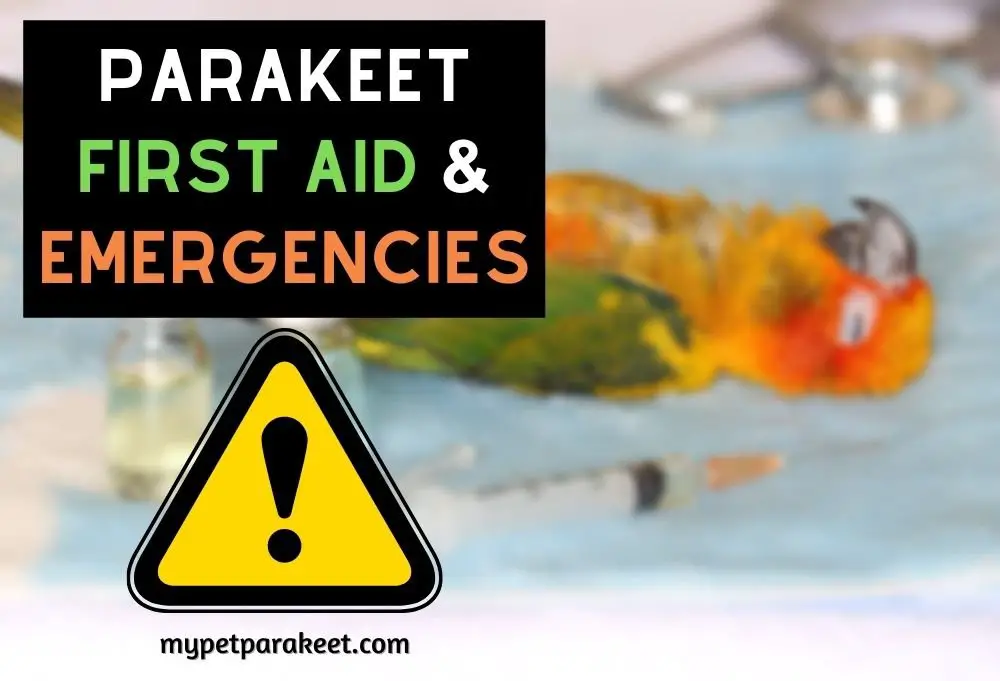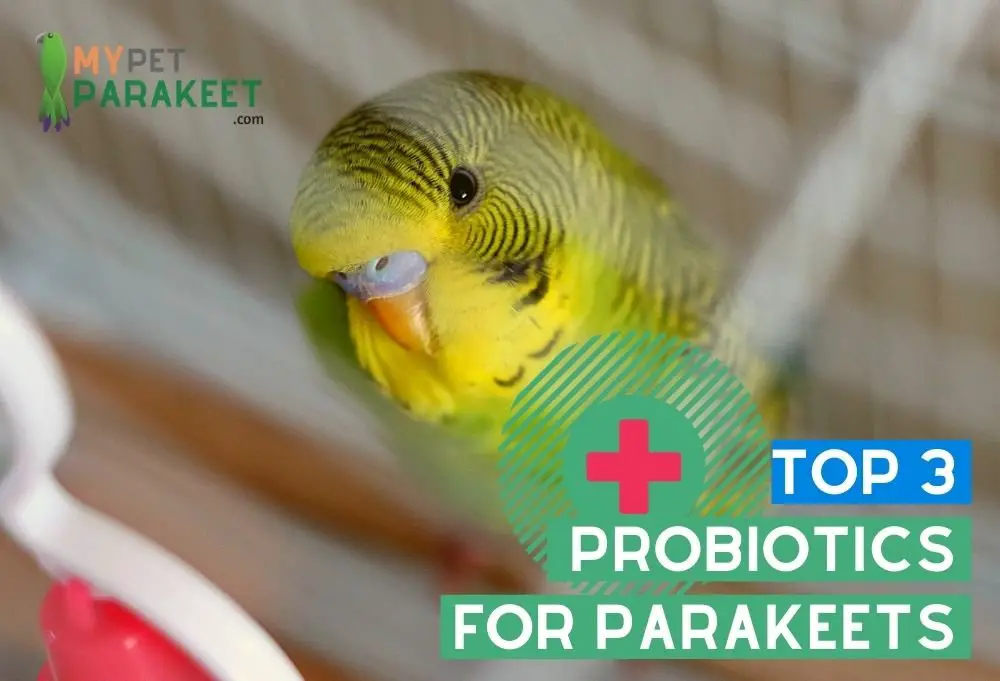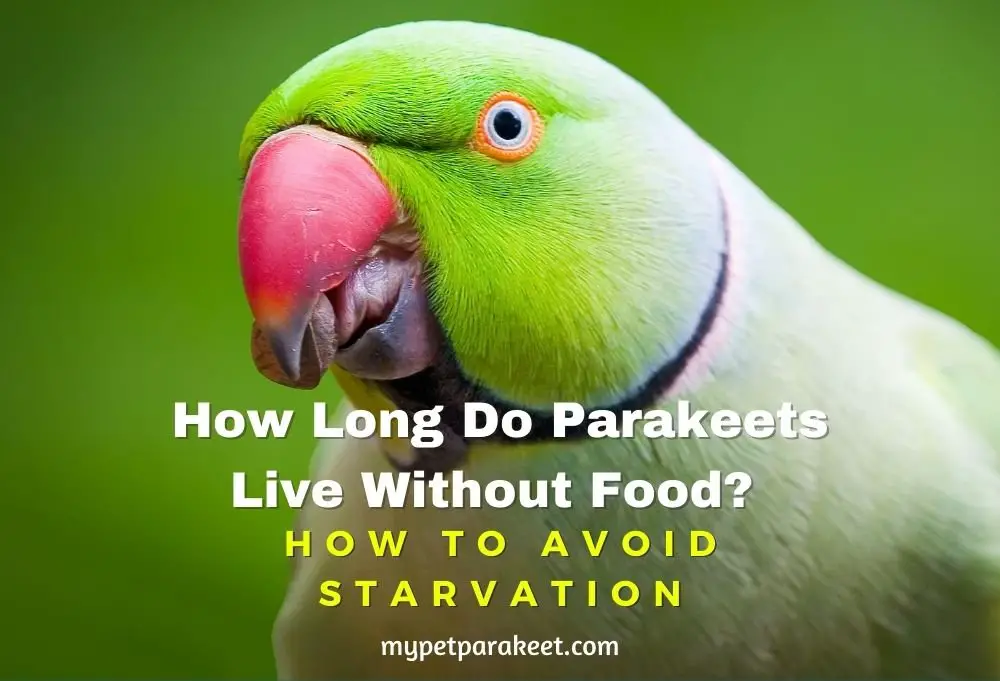Parakeets are masters of hiding their vulnerabilities. As a prey species, they will do all they can to hide injuries and illnesses. This strategy assists to keep them safe from predation when they are weak and keep them from getting exiled from the safety of their flocks.
Unfortunately, for a pet parakeet owner, that means it can be tough to pick up on signs of a deteriorating parakeet. Often by the time we notice something is wrong, they are already quite ill and might be in the process of dying.
What can cause the sudden death of a parakeet? What are the signs a parakeet is dying? And what can you do to save a dying parakeet? Read on to explore the answers to these questions so you can keep your parakeet safe and sound.
If you suspect your parakeet is ill, your should call your vet immediately.
What Can Cause A Parakeet To Die Suddenly?
The loss or illness of a pet can come as a shock to owners who did not realize something was wrong. Birds are excellent at hiding their injuries and illnesses, so their deaths are often sudden for unexpected families.
The possible causes of death for parakeets is vast. Let’s break it down into the most common reasons, so we know what to be on the lookout for regarding our parakeet’s health.
- Diseases – bird diseases can be genetic, viral or bacteria
- Infections – infections may occur from toxins in the environment, poor hygiene (here’s our guide for cleaning a parakeets cage) or contamination of wounds. Infection may arise from an animal attack.
- Malnutrition – malnutrition can be caused by an inadequate diet or an overwhelming parasite burden in the digestive tract.
- Temperature – extremes in the cold or heat can lead to body function shutdown.
- Head Trauma – injuries to the head can cause unseen deterioration. This can happen from a parakeet flying into something or blunt force trauma.
- Stress – ongoing stress can impact the immune system and lead to death. Read more about stress-related deaths here.
Signs Your Parakeet Is Dying
Before we delve into some of the telltale signs of a dying parakeet, please note that the following symptoms do not indicate imminent death.
While these signs can be seen in a dying parakeet, they may also be misinterpreted as normal behaviors or signs of mild illness. Call an experienced avian vet if you are at all concerned.
The process of dying for a parakeet may result in the following signs:
- Puffed up – this behaviour is typical in many instances, such as sleep or response to cool temperatures. It is a behaviour designed to protect and insulate a parakeet. Thus it may be seen during the end of life.
- Scruffy – poor feather conditions are often seen in unwell birds. It can be a sign of an out of control parasite burden, poor nutrition, aggression or self-mutilation.
- Unusual breathing – a bird struggling for life may be seen with difficult or rapid breathing. Wheezing, clicking, and tail bobbing may also be heard and seen in a bird who is in respiratory distress. Stretching of the neck and trachea and open mouth breathing may also be a sign of a bird struggling to breathe.
- Discharge – eyes, nares and ears may show signs of the discharge as a symptom of many serious illnesses.
- Uncoordinated – shaking, trembling, falling and struggling to balance can occur when a bird is approaching death. These behaviours may be confused for seizures due to their nature.
- Vomiting – while regurgitation of food is usual, vomiting is not. A bird that is regurgitating will be relaxed, while a vomiting bird will not. Vomiting can cause trembling and shaking, and distress.
How To Save A Dying Parakeet
First Response: Keep Them Calm & Stabilize
If you find your parakeet is in distress and you suspect they may be dying, your first step is to calm and isolate them quickly. Excess stress can increase the rate at which they deteriorate and limit your response time.
If your parakeet is injured, you should provide some immediate first aid to stabilize them. Read here our guide for parakeet first aid and our favored first aid products for parakeet first aid.
Isolate your parakeet from all other birds, pets, and humans and find a quiet and warm place to keep them. While it should be moderately dim with no harsh bright lights, don’t create complete darkness as you will discourage natural behaviors.
Once they are stable and isolate, ensure you reduce their handling as handling can cause excess stress.
Call Your Vet

This is absolutely the most important tip if you think your parakeet is dying, sick, or have any general questions. While our expert team can offer some great advice, it is not a replacement for specialized care from a veterinary professional.
Call an experienced avian vet.
A vet clinic will be able to assess, test, and identify possible issues with your distressed parakeet. The sooner they can see a professional, the sooner they can attempt to save them. Once a parakeet is in physical distress, the dying process can be extremely fast, so time is of the essence.
Even if they seem to improve, still see a vet as they may still be suffering. This is especially prudent for animal attacks as they may recover from the original shock, but bacteria from mammals' mouths can cause ongoing infection. The same goes for head injuries; deterioration can happen unseen internally.
Home Response
If you cannot see a vet immediately, there are some steps you can take at home to rehabilitate a parakeet that is near death.
Keep your parakeet at a moderate temperate. Supplemental heat may be beneficial, such as a heating pad.
Avoid direct heat from a heat lamp as it can cause burns or dry out mucus membranes. A light-emitting heat lamp is also not ideal through cold nights as it will upset your parakeet’s natural circadian rhythm. If a head injury is suspected, do not provide supplementary heat as it can exasperate swelling in the brain. Here are our best tips for keeping a parakeet warm.
Attempt to hydrate. Hydration is vital for fighting death and healing. Encourage your parakeet to drink, syringe feeding it if necessary. Hydration can also be boosted by electrolytes with providing extra vitamins and amino acids for cell hydration. Sugar-free, all-natural fruit juice in small quantities can also act as electrolytes.
Ingesting water and food will benefit a parakeet in distress, but you can syringe feed to encourage a fragile bird. Be very careful that the syringed items go down the esophagus and not the trachea. Only drop minimal quantities in the beak. If they do not have the strength to swallow, you can consider crop feeding.
Using a crop tube to hydrate or feed should only be done by experienced persons. As a parakeet owner, you may consider taking an avian first aid course that will teach you this skill.
Crop feeding involves using a long curved tube to deliver water, food and medication directly into the crop to avoid the risk of inhalation from regular syringe feeding. This skill can be lifesaving for a dying parakeet.
Record Everything
As stated above, time is of the essence, so getting your sick parakeet to a vet is paramount to saving them.
Your response from the time you found them to the time they get to see a professional vet should be entirely recorded so that your vet has all the information possible for the best outcome for your parakeet.
Record times, symptoms, feedings, first aid, your care at home, and give this all to your vet when you take in your dying parakeet.
Final Thoughts: Be Proactive
The key to keeping your bird healthy is knowing your parakeet well. If you are aware of what is normal for your parakeet, you will identify when something is abnormal.
Despite being sneakily good at hiding their vulnerabilities, your parakeet will tell you when they are not themselves. Some of the signs you should look fo include the below:
Changes in:
- Energy & activity
- Fecal, urine and urate
- Body condition
- Weight
- Appetite and thirst
A parakeet that may be dying can be a terrifying prospect for a loving owner. We hope this guide will help you be prepared to deal with unexpected health issues and provide you with the confidence and knowledge to act quickly to save a life.









